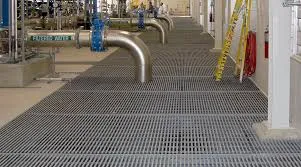
-
 Afrikaans
Afrikaans -
 Albanian
Albanian -
 Amharic
Amharic -
 Arabic
Arabic -
 Armenian
Armenian -
 Azerbaijani
Azerbaijani -
 Basque
Basque -
 Belarusian
Belarusian -
 Bengali
Bengali -
 Bosnian
Bosnian -
 Bulgarian
Bulgarian -
 Catalan
Catalan -
 Cebuano
Cebuano -
 China
China -
 China (Taiwan)
China (Taiwan) -
 Corsican
Corsican -
 Croatian
Croatian -
 Czech
Czech -
 Danish
Danish -
 Dutch
Dutch -
 English
English -
 Esperanto
Esperanto -
 Estonian
Estonian -
 Finnish
Finnish -
 French
French -
 Frisian
Frisian -
 Galician
Galician -
 Georgian
Georgian -
 German
German -
 Greek
Greek -
 Gujarati
Gujarati -
 Haitian Creole
Haitian Creole -
 hausa
hausa -
 hawaiian
hawaiian -
 Hebrew
Hebrew -
 Hindi
Hindi -
 Miao
Miao -
 Hungarian
Hungarian -
 Icelandic
Icelandic -
 igbo
igbo -
 Indonesian
Indonesian -
 irish
irish -
 Italian
Italian -
 Japanese
Japanese -
 Javanese
Javanese -
 Kannada
Kannada -
 kazakh
kazakh -
 Khmer
Khmer -
 Rwandese
Rwandese -
 Korean
Korean -
 Kurdish
Kurdish -
 Kyrgyz
Kyrgyz -
 Lao
Lao -
 Latin
Latin -
 Latvian
Latvian -
 Lithuanian
Lithuanian -
 Luxembourgish
Luxembourgish -
 Macedonian
Macedonian -
 Malgashi
Malgashi -
 Malay
Malay -
 Malayalam
Malayalam -
 Maltese
Maltese -
 Maori
Maori -
 Marathi
Marathi -
 Mongolian
Mongolian -
 Myanmar
Myanmar -
 Nepali
Nepali -
 Norwegian
Norwegian -
 Norwegian
Norwegian -
 Occitan
Occitan -
 Pashto
Pashto -
 Persian
Persian -
 Polish
Polish -
 Portuguese
Portuguese -
 Punjabi
Punjabi -
 Romanian
Romanian -
 Russian
Russian -
 Samoan
Samoan -
 Scottish Gaelic
Scottish Gaelic -
 Serbian
Serbian -
 Sesotho
Sesotho -
 Shona
Shona -
 Sindhi
Sindhi -
 Sinhala
Sinhala -
 Slovak
Slovak -
 Slovenian
Slovenian -
 Somali
Somali -
 Spanish
Spanish -
 Sundanese
Sundanese -
 Swahili
Swahili -
 Swedish
Swedish -
 Tagalog
Tagalog -
 Tajik
Tajik -
 Tamil
Tamil -
 Tatar
Tatar -
 Telugu
Telugu -
 Thai
Thai -
 Turkish
Turkish -
 Turkmen
Turkmen -
 Ukrainian
Ukrainian -
 Urdu
Urdu -
 Uighur
Uighur -
 Uzbek
Uzbek -
 Vietnamese
Vietnamese -
 Welsh
Welsh -
 Bantu
Bantu -
 Yiddish
Yiddish -
 Yoruba
Yoruba -
 Zulu
Zulu
frp desalination pipes and fittings for efficient water treatment ...
FRP Desalination Pipes and Fittings for Efficient Water Treatment
The increasing global demand for freshwater has propelled the development of advanced desalination technologies. One such innovation includes the utilization of Fiber Reinforced Plastic (FRP) pipes and fittings, which have become essential components in efficient water treatment processes. Harnessing the unique properties of FRP, various industries aim to enhance the effectiveness of desalination facilities while reducing environmental impact.
FRP is composed of a polymer matrix reinforced with fibers, typically made of glass or carbon. This combination results in materials that are not only lightweight but also exhibit excellent corrosion resistance, high tensile strength, and durability, making them ideal for demanding water treatment applications. In the context of desalination, where seawater is treated to produce potable water, FRP components contribute significantly to overcoming some of the key challenges associated with traditional pipe materials, such as metal and concrete.
One of the primary advantages of using FRP pipes and fittings involves their superior resistance to corrosion. Traditional materials, especially metals, are susceptible to rust and degradation when in contact with saline water. In contrast, FRP materials maintain their structural integrity in harsh environments, ensuring a longer service life and decreasing maintenance costs. This resilience is particularly crucial in desalination plants that operate continuously under challenging conditions.
frp desalination pipes and fittings for efficient water treatment ...

Moreover, the lightweight nature of FRP significantly simplifies the installation process. Compared to heavier materials, FRP pipes are easier to handle and transport, thereby reducing labor costs and installation time. The flexibility of FRP allows for versatile designs and configurations, enabling engineers to create efficient layouts that optimize the overall flow of seawater through desalination systems.
Another noteworthy benefit of FRP is its thermal insulation properties. With the capability to minimize heat transfer, FRP can help maintain optimal temperatures within the piping system, enhancing operational efficiency. This feature is particularly beneficial during the desalination process, which often involves energy-intensive procedures to separate salt from water.
Additionally, the seamless construction of FRP fittings reduces the risk of leaks, a common concern in traditional piping systems. This reliability leads to fewer failures and downtime, ultimately contributing to a more efficient and uninterrupted freshwater supply. Furthermore, the resistance to scaling and fouling that FRP offers ensures a cleaner system, enhancing the quality of the treated water.
In conclusion, the incorporation of FRP pipes and fittings in desalination processes represents a significant advancement in water treatment technology. Their lightweight, corrosion-resistant, and durable nature makes them a preferred choice for many desalination facilities worldwide. As the need for sustainable and efficient water treatment continues to grow, FRP materials are poised to play a crucial role in addressing the challenges of freshwater scarcity and enhancing the quality of potable water. With ongoing innovations, the future of desalination holds promise, as the integration of advanced materials like FRP paves the way for more sustainable solutions to global water concerns.
Latest news
-
High-Quality Fiberglass Car Bodies Durable GRP Car & Boat Body SolutionsNewsJul.08,2025
-
High-Quality Fiberglass Dual Lamination Product Manufacturer Durable FRP & GRP Dual Lamination SolutionsNewsJul.08,2025
-
Rectangular Tank with Dimensions for GRP Calculation Custom Fiberglass GRP Rectangular TanksNewsJul.07,2025
-
High-Quality Fiberglass Weir Custom FRP Weir & Fiberglass Tanks ManufacturerNewsJul.07,2025
-
CPVC FRP Pipe A Reliable Choice for Industrial Applications High Strength & Corrosion ResistanceNewsJul.07,2025
-
Fiberglass Scrubber for Effective Cleaning and Stain Removal – Superior Performance in Various ApplicationsNewsJul.06,2025









